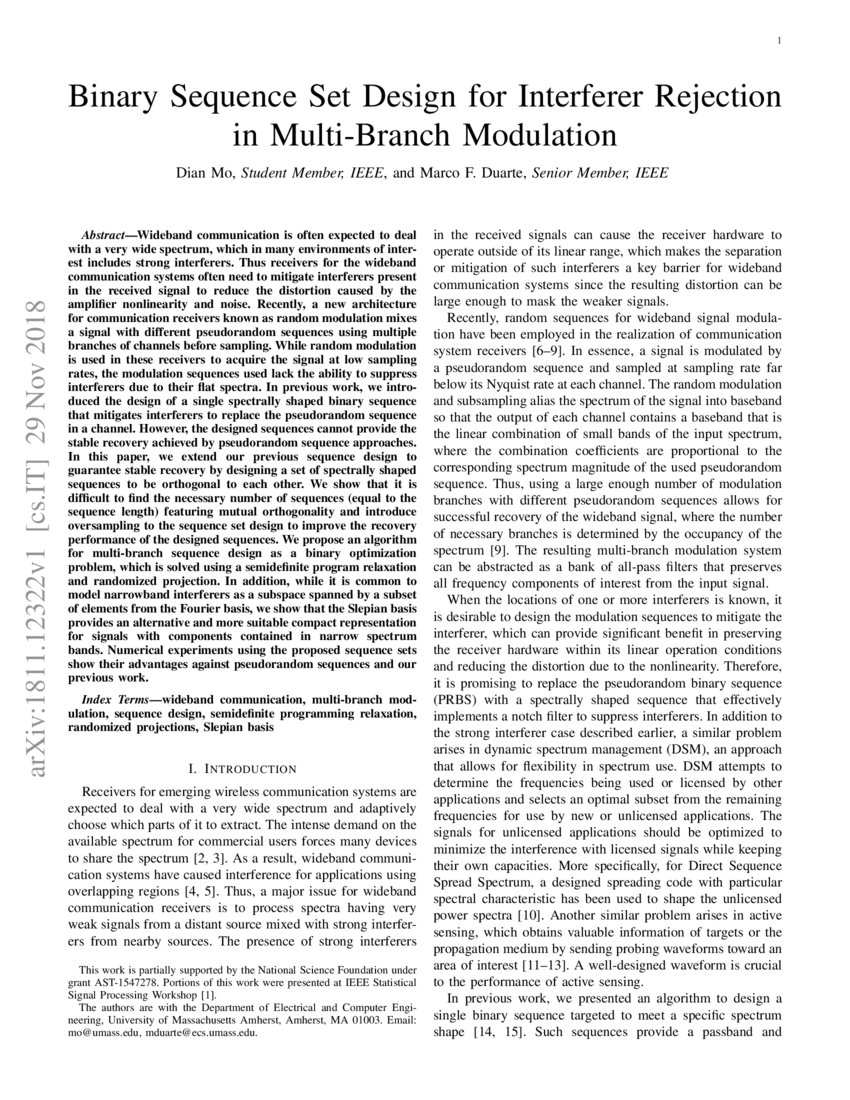

In most of them, the output sequence is a binary sequence generated as the image of a nonlinear Boolean function in the shift register binary stages. Different LFSR-based sequence generators can be found in the literature. Desirable characteristics for pseudorandom binary sequences are long period, good statistical properties or large linear complexity. Most generators producing such sequences are based on Boolean functions and Linear Feedback Shift Registers (LFSRs). Pseudorandom binary sequences are simple successions of bits with applications in fields so different as spread-spectrum communications, circuit testing, error-correcting codes, numerical simulations, or cryptography (stream cipher). Consequently, the binomial sequences can be considered as primary tools for generating other more complex Boolean networks with applications in communication systems and cryptography. In this sense, the binomial sequences exhibit the same behavior as that of particular Boolean networks.

Furthermore, this work enhances the close relation between the binomial sequences and a kind of Boolean networks, known as linear cellular automata. Other structural properties of these sequences (period, linear complexity, construction rules, or relations among the different binomial sequences) have been analyzed in detail.

They have fancy properties such that all the sequences with period equal to a power of 2 can be represented as the sum of a finite set of binomial sequences. This sequence is a union of several geometric sequences, and so we again call it quasigeometric.The binomial sequences are binary sequences that correspond to the diagonals of the binary Sierpinski’s triangle. \(F^k\) is scaler, for some \(k>1\) – this corresponds to \(\alpha/\beta\) a \(k\) th root of unity. This sequence will be the point-wise product of an arithmetic and geometric sequence. \(F\) is nondiagonalizable – this corresponds to \(\alpha = \beta\). \(v =, ]\) is an eigenvector of \(F\) – this corresponds to a geometric sequence with \(a*b = 0\). This sequence is geometric after term u0 and so we call it quasigeometric. \(F\) is singular – this corresponds to c = 0, and thus \(\alpha*\beta = 0\). More concretely, there are 4 classes of degeneracy, that can all be formulated If and only if \(a*b*\alpha*\beta \neq 0\) and \(\alpha/\beta\) is not a Then we say that the sequence is nondegenerate Let \(\alpha\) and \(\beta\) denote the roots of the characteristic polynomial is_arithmetic () True is_degenerate ( ) ¶ĭecide whether the binary recurrence sequence is degenerate. Sage: S = BinaryRecurrenceSequence ( 2, - 1 ) sage: sage: S. BinaryRecurrenceSequence ( b, c, u0 = 0, u1 = 1 ) ¶īases: _object.SageObjectĬreate a linear binary recurrence sequence defined by initial conditions ValueError: the degenerate binary recurrence sequence is geometric or quasigeometric and has many pth powers pthpowers ( 7, 10 ** 30 ) Traceback (most recent call last). pthpowers ( 3, 10 ** 10 ) # long time (3 seconds) - provably finds the indices of all 3rd powers less than 10^10 sage: T = BinaryRecurrenceSequence ( 2, 0, 1, 2 ) sage: sage: T. sage: S = BinaryRecurrenceSequence ( 8, 1 ) #a Lucas sequence sage: S. pthpowers ( 2, 10 ** 10 ) # long time (7 seconds) - in fact these are all squares, c.f. period ( 4 ) #the period of the fibonacci sequence modulo 4 6 sage: R.

Sage: R = BinaryRecurrenceSequence ( 1, 1 ) #the Fibonacci sequence sage: R ( 137 ) #the 137th term of the Fibonacci sequence 19134702400093278081449423917 sage: R ( 137 ) = fibonacci ( 137 ) True sage: sage: R.


 0 kommentar(er)
0 kommentar(er)
